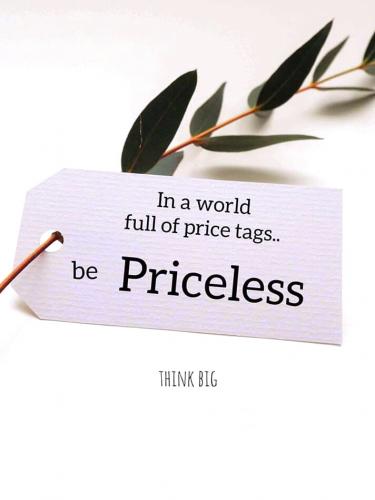Select a category
Hobbies and Handiworks

Every lady desires to be admired and their looks complemented. Looking good is now every lady's​ business. While some ladies love wearing English wears others prefer native wear with Ankara and Lace material.
Dresses sewn with Lace material makes the person wearing the attire look cute and stunning. Rocking lace material somehow changes the wearer's look and status as one would see you as one big rich lady because of the beautiful style you slay with your lace material.
Check out beautiful Lace Style you can slay to wedding ceremonies, Birthday parties, naming ceremony and child dedication. Brides can also rock this Lace Style on their traditional wedding day. Irrespective of the colour (red, blue, orange, green or black) Lace material gives you a classy look.

6 Reasons to Pursue Entrepreneurship in Retirement
If sitting around just isn’t your thing, then retirement is the perfect time to live out the dreams you may have put on hold. Simply filling empty hours with pointless recreation may feel like the opposite of freedom for many of the 72 million U.S. baby boomers, who have worked their entire lives. Launching your own business may be your ideal “retirement lifestyle.â€
Six reasons to start a business in retirement
Related: These Strategies Help Entrepreneurs Combat Anxiety and Depression
Business ideas to consider
The best retirement business ideas start with what you know. If the goal is not necessarily to make money, dig into your interests and hobbies, and choose something that brings you pleasure. If you are looking for something new, here are some ideas.
Related: Retired? Here Are 17 No-Cost Ways to Make Money on the Side.
Take control of your life
It just doesn’t make sense to throw away all your knowledge and experience just because of a particular date on the calendar. With life spans increasing, you could easily change your career when you're 50 or 60 or embark on an exciting entrepreneurial venture for the next 20 to 30 years. So why be stuck in a dull retirement when you can take control of your life and do something interesting, rewarding and fulfilling while contributing to society at the same time?
Related: Retiring Young Could Affect Brain Functions: Study
To become an entrepreneur, you must first, change your mindset. If you think you’re too set in your ways and can’t possibly do something so daring at this point in your life, I’m here to tell you that you can — if you want to.
Stop labeling yourself according to your age or what you’ve done for a career. By seeing yourself as a banker, accountant or salesperson, you’re subconsciously telling yourself that’s what you are; this stops your ability to reinvent yourself.
If you need business training or guidance (and you almost certainly will if you’ve always worked for someone else), find the right courses and programs that will give you the necessary skills. Better still, find a mentor, someone with business experience to provide feedback about what you’re doing or intending to do. SCORE network offers free mentorship.
Becoming an entrepreneur after retirement may be your best retirement plan as it puts you in control of your life and your future.

If You Are A Tailor, This Article Will Guide You To Take Body Measurements For Clothes Making
Taking accurate body measurements is one of the keys to great fit. Whether you choose to make your pattern block from a commercial fitting pattern or draft it from measurements, having accurate measurements is critical to the success of your block. (And a well-fitting block is critical to the success of everything you make!)
Many clothing catalogs or fitness programs ask you to take body measurements. All you really need is a soft measuring tape (or a piece of string and a regular tape measure) and (preferably) someone to help you, though you can do it yourself.
Keep in mind that when you're measuring, you should have the tape measure snug but not tight. You also need a Pen and paper.
How To Take Body Measurements For Clothes Making:
Neck Circumference: To measure the neck, wrap a measuring tape around the neck, beginning at about one inch from the meeting of your neck and shoulders, which may coincide with the bottom part of your Adam's apple.
Above Bust Line Measurements:
When doing your measurements, you have to do measurements above your bust line.
The bust line position is a line that is level with the floor and crosses over the bust points. The bust point indicates the fullest part of the bust which is what needs to be addressed for a good fit. The bust position can be different on everyone.
The bust point is the most prominent point of the bust on each side of the body, and corresponds roughly with where the nipple is, though depending on individual shape/bra/etc, ie may be slightly higher, lower, or to the side of the nipple. The bust point is also know as the bust apex.
The under bust line: you take your tape and measure from the middle of your chest to the center of your spine, under your remaining breast where the bra band sits.
The Bust Circumference measurements: A bustline is an arbitrary line encircling the fullest part of the bust or body circumference at the bust. It is a body measurement which measures the circumference of a woman's torso at the level of the breaassts.
The waist circumference: To measure your waist circumference , place a tape measure around your body at the top of your hipbone. This is usually at the level of your belly button. You are at increased risk for health problems if you are: A man with a waist measurement greater than 40 inches.
Above Bust Circumference: Just as in measuring the bust, wrap around the back of the torso, keeping the measuring tape up and close to the arm pits, but guide the tape measure up just above the breassts .
Nipple to Nipple measurement: Measure across the base of your nipple, where your nipple meets the areola. Do not measure your areola, just the width of your nipple. Add 4mm to your measurement.
To measure the lower waist circumference: To measure your natural waist, you want to find the narrowest part of your waist, located above your belly button and below your rib cage.
Place a tape measure around your body at the top of your hipbone and around your stomach.
Under bust circumference: Pull the measuring tape around your ribcage, just underneath your breasts. Make sure the tape is running straight and level around your body. This is your under bust measurement.
place the end of the measuring tape at the place where your shoulder meets the top of your arm, or, the boniest part of your shoulder. From there, holding the tape taut, they should stretch the tape straight across to the tip of your other shoulder blade.
The back waist line: For those new to sewing, the back waist length is not that hard to figure out.
It is the measurement of your back's length from your neck down to your waist. It is usually the shortest length you will come across when trying to find clothing that fits you.
Waist line: Your natural waistline hits at the area between the top of your hip bone and the bottom of your rib cage.
Sleeve Circumference: Measure from the center back of your neck (at your spine) to the end of your shoulder at the top of your arm.
Measure from your shoulder to just past your wrist bone to where you would like your shirt cuff to sit.
Lower Waist: To Measure your lower waist,
Hold the tape measure between the top of the hipbone and the bottom of the ribs. Breathe out normally. Bring the tape around the waist.
Do not hold the tape too tight and ensure the tape measure is straight around the back.
Hip Circumference: This measurement is used for bottoms and sometimes for dresses.
Stand with your hips together and measure the fullest part of your hips. Be sure to go over your buttocks as well.
If it's a gown, you should end your measurements where you will like the gown to stop. You should note if the length of your gown is on your knee or if it's a long length.
If it's a short, trouser or skirt, you should do the measurement and note if it's a long skirt or short skirt.
Arm hole circumference: 1-16 Armhole Circumference Measure along the contour of armhole seam from the bottom of the armhole to the top of the armhole. 1-17 Armhole (Straight) Measure from shoulder point straight down to the armhole/side seam intersection.
Trouser in length: Measure the inside seam from the crotch (fork) to the hem.
Shoulder Circumference: This is your shoulder seam length. Measure from the base of your neck right in the middle of your shoulder (from a bird's eye view) and along to the tip of your shoulder.
Move the tape around your shoulder to get the accurate measurement.
If it's a short, measure the the circumference of the length of the short, if it's a trouser, measure the knew circumference, calf circumference and trouser bottom.
Thigh: Measure the circumference of the fullest part of your thigh. Wrap the tape measure around your thigh from front to back and then around to the front.
Advertisement


1. Put your hand on a piece of paper and Trace the outline
Trace your hand on a piece of paper long enough to like the size of glove you want.
Spread your fingers wide apart and use a pencil or pen to trace. Try to keep the pencil very close to your skin while tracing. Trace around each finger around as well as the sides of your hand.
2. Use a scissors to cut the paper along the lines you drew
Cut the paper with a sharp pair of scissors, along the lines drawn on the paper pattern. Cut slowly to create a smooth line (avoid jagged edges).
3. Get a wide clothe or any material and Trace
Use old sack, clothes or Nylon and fold it should be large enough for the entire glove. Fold smoothly avoiding lumps or bumps. Trace it out smoothly just like you traced your hand.
4. Insert pins on the material
Insert an office pin along every every edge of the material (1 pin through every fingertips. This is to hold the material together while you sew). Every part should be smooth on both sides while holding it with pin.
5. Sew along the lines you drew with a straight stitch
Use your hand needle or sewing machine and begin sewing around the lines. Sew around the sides too. Use short stitches to cover well.
6. Carefully cut off the excess material/fabric around the stitches
Using sharp pair of scissors, carefully cut around outside of the stitches to remove the excess fabric. Cut carefully, don't cut any of the stitches or else a hole will be created in the glove.
7. Turn the glove outside out
After seeing turn the right side out and wear it on (Just turn it inside out and wear it to see if it fits).
8. Make another one for the second hand by repeating the process.
Equipments you will need:
-The material
-Pen or pencil
-Office pins
-Scissors
-Thread
-Needle or sewing machine.
Did you really enjoy this article? Please note that your interest is my goal and I need your feedback. Kindly login, Like, share and comment on this article. Thanks
Advertisement
Advertisement
 Faithfulness
Faithfulness Garbamahmud4
Garbamahmud4

 Kweenshantel
Kweenshantel Dahirsgirei
Dahirsgirei Kuamo
Kuamo Yimika001
Yimika001